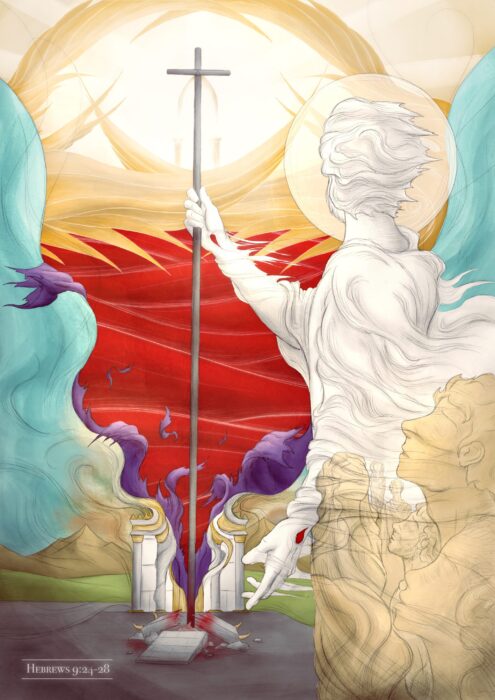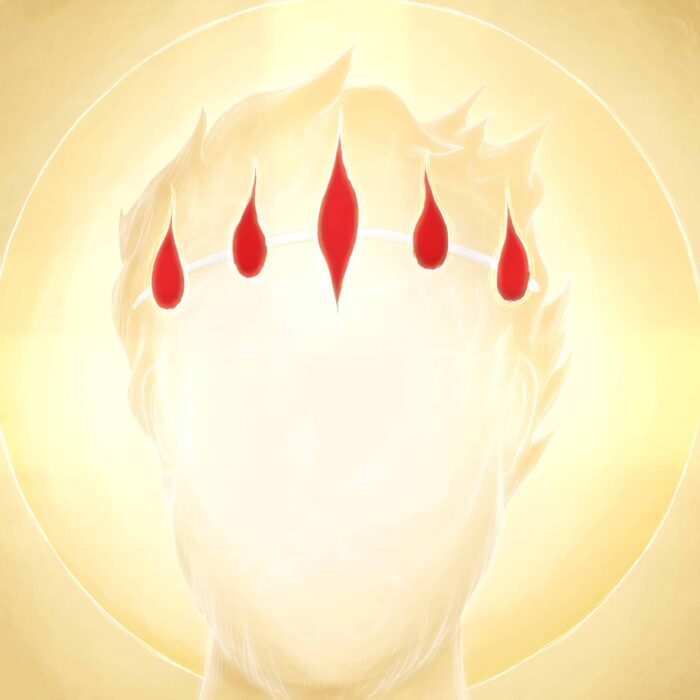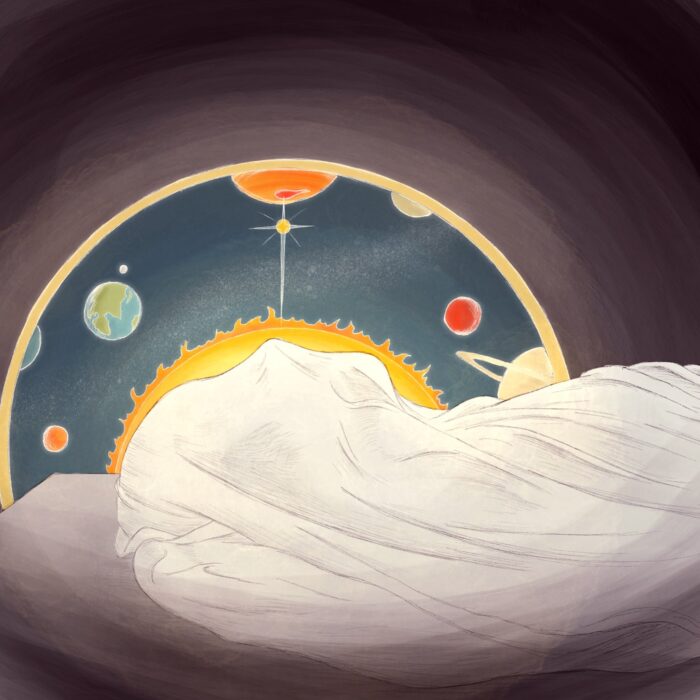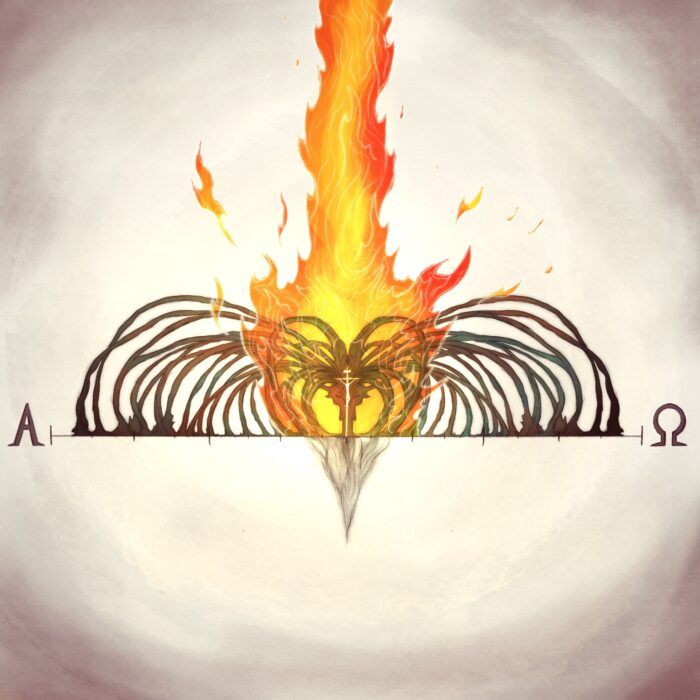
“For Christ has entered, not into holy places made with hands, which are copies of the true things, but into heaven itself, now to appear in the presence of God on our behalf. Nor was it to offer himself repeatedly, as the high priest enters the holy places every year with blood not his own, for then he would have had to suffer repeatedly since the foundation of the world. But as it is, he has appeared once for all at the end of the ages to put away sin by the sacrifice of himself. And just as it is appointed for man to die once, and after that comes judgment, so Christ, having been offered once to bear the sins of many, will appear a second time, not to deal with sin but to save those who are eagerly waiting for him.”
(Hebrews 9:24-28 ESV)
The Passage Explained
Hebrews 9:24-28 forms a central point in the author’s ongoing argument that the person and work of Jesus Christ fulfills and eternally replaces the role of the Old Covenant temple/tabernacle and priests. In this text we find two main evidences showing how the priesthood of Christ is superior to the Levitical priesthood:
First, Christ’s priestly ministry takes place in the true holy place (of which the earthly temple was only a shadow), that is to say, in the unmediated presence of God Himself (Hebrews 9:24).
Second, Christ does not come offering ineffectual blood over and over again like the Levitical priests, rather He has put away the sin of His people forever by offering Himself once and for all (9:25-28).
So, the Levitical priests ministered in a shadow and a copy of the reality, while Christ has appeared in the presence of God Himself and there intercedes and pleads the work of His cross on behalf of His people. And this is an awesome hope because the pleading of the Son on our behalf is evidence that the Father’s heart too is for us, since the Father and Son are one in purpose.
But not only does Christ surpass the Old Covenant priests by ministering in the “true tabernacle,” He also surpasses them through the infinite qualitative superiority of His sacrifice. He does not have to make sacrifices over and over and over again, never fully purifying His people from a guilty conscience—as was the case in the Old Covenant. Rather, He has offered Himself once and for all. The death of Christ on the cross was final for all of His people in all times, past, present and future. Any and all who trust in the grace of God in Christ (or, in an OT context, who trust in YHWH and His promises to redeem) will be saved. Finally, in verses 27-28, the author of Hebrews highlights the “once for all” nature of Christ’s work by showing that another sacrifice for sins will never again be necessary. Instead, when Christ appears the second time it will not be to deal with sins, but to save those who have anchored their hope in His once-for-all work on Calvary.
The Picture Explained
In this picture I tried to address the two main arguments of the author which I’ve outlined above. At the base of the picture the Old Covenant temple dissolves around the cross because the work of Christ fulfills and replaces the work done in the earthly temple. The torn veil extends up and out of the physical temple and reveals behind it the heavenly throne of God, because Christ passes through the “true veil” and appears in the “true holy place” to function eternally as our High Priest (9:23-24).
Before the throne of God is an ocean of Christ’s atoning blood, reminding us that the sin-forgiving work that Jesus accomplished was super-abundantly sufficient to save to the uttermost all who will draw near to God through Him. I also emphasized the once-and-for-all nature of Jesus’ work by showing the foot of His cross splitting the Old Covenant altar in two. As Hebrews 10:14 says, Christ’s single sacrifice of Himself has “perfected for all time those who are being sanctified.” There will never again need to be an offering made to God to secure the forgiveness of our sins, the OT altar was symbolically broken when the Lamb of God offered Himself on the True Altar of the cross. And lastly, verses 27-28 are represented by the seven saints who are pictured as superimposed within the body of Christ. Their single sacrifice has been made and their faces are turned upward in anticipation and longing for Christ’s return since His second coming will mean final salvation for them.




